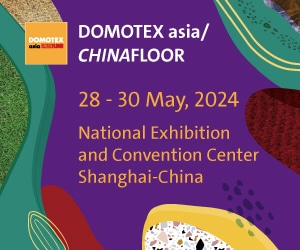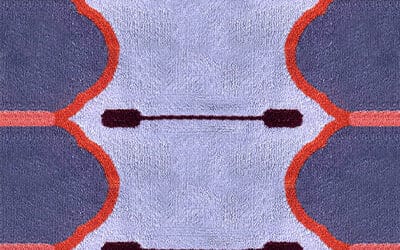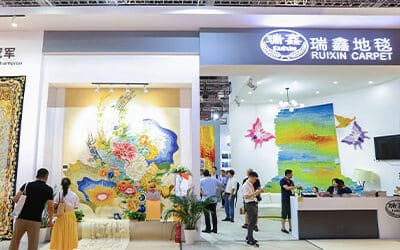What did the pandemic mean for you or your business? For many it has been a period of hardship and stress, and for others it has been worse still. Some people have found positivity in the peace and quiet of the lockdown while others have decided to make big changes to their lives. In the first of a series of interviews, Lucy Upward talks to individuals working in the rug and textile industries about the solutions and evaluations they came up with during lockdown. For some creativity has been the key to dealing with the new way of living or future planning. Those focusing on business solutions are busy working out how to keep valued staff, how to tell the story of a rug virtually and how significant the home improvement trend could become in the months ahead
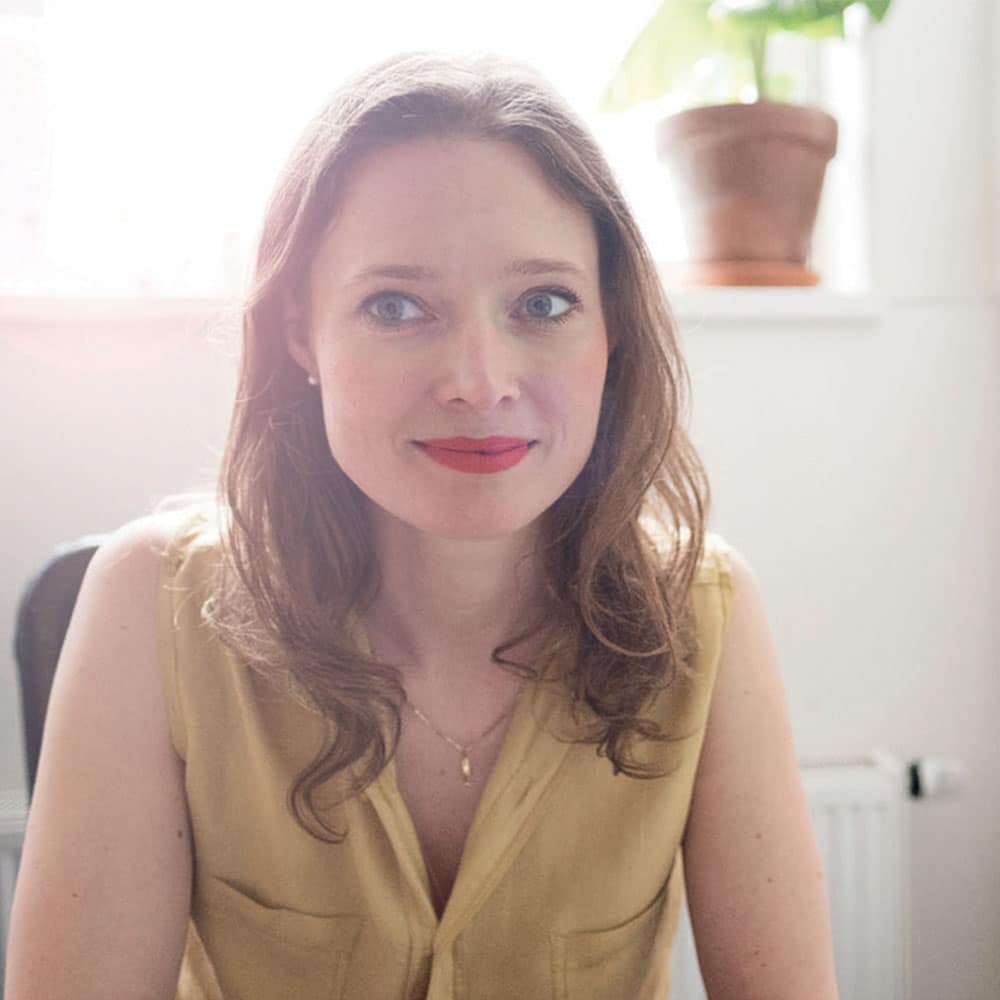
How has the lockdown been for you personally? The lockdown has been a real eye-opener for me. I love how quiet and simple life has become. I love being at home. I realise now how little I need to be happy. I also realised how tired and stressed I have been the past couple of years. So I took the time to reflect, and make new or adjusted plans for the future. The next step is to find a new home for me and my partner in the countryside, a place where we can reconnect with nature, have the space to experiment with natural dyes, or maybe even grow my own flax. I have been working like a maniac the past couple of years, and even though I am an energetic person, I can’t keep going like I did and I don’t want to.
You have been working recently with sustainable textiles. When did this start and what made you start thinking ecologically? I have wanted to work ecologically since I graduated in 2010. I wrote my thesis about natural dyes and never really wanted to stop working with them but to be honest, when I started working there was so much you had to think about and the industry was way less transparent than it is now. I asked suppliers about the origin of natural materials, but after not getting any answers I just stopped asking the questions. So what I started doing is telling stories about the environment. For example the throws from the Skinn collection, their inspiration came from algae, more specific diatoms and their movement in the water. We just can’t realise enough how important clean oceans are, because these minuscule creatures are the secret to the earth’s oxygen supply.
The lockdown made me even more determined to work sustainably, it gave me more time to do the research that is needed. Working sustainably is not as easy as it sounds
The Fungy collection originates from the Aspergillus tubingensis, a type of fungus found in the Amazon. Did you know this fungus only needs polyurethane to live? It eats plastic! It’s no solution for our plastic problem yet, researchers have not yet figured out how we might harness this ability to break down the ghastly amounts of plastic we as a species are churning out and chucking away. But I am absolutely amazed that nature found a way to solve a problem we created.
At some point it started bothering me more and more that I was telling all these beautiful stories, but that the yarns I used in my products were just as damaging. Three years ago, my company was up and running, so I started looking into sustainable materials again. Now I can focus, and do the research that is needed to work as sustainably as possible.
Have you developed new design ideas during lockdown? The lockdown made me even more determined to work sustainably, it gave me more time to do the research that is needed. Working sustainably is not as easy as it sounds. You need to check every manufacturer carefully, every material, where did the cotton come from, how has it been dyed. If it is recycled, where and how does the recycling process take place. For example, there’s one textile recycling plant in Europe that gets its waste material from all over Europe. They make wonderful yarns, the new recycled yarn gets its colour from the recycled material they use. So before they shred the waste material back to fibres, they sort it by colour. Unfortunately they work for the US market, so if I want to use this material, I would have to buy it in the US and ship it back to Europe, where it originates. This is madness, isn’t it? Fortunately the producer I work with, a small local weaving mill called Enschede Textielstad, has a good relationship with the recycling plant, and they can send batches of yarn directly.
Do you think people are starting to buy into sustainability more? I think people are starting to realise its importance. But I think all important changes happen too slowly for the people who want change. We have managed to get everything produced for such low prices and the quality of man-made materials is so high. If you look at hospitality, a couple of years ago 40.000 Martindale was already excellent but now everything under 100.000 Martindale isn’t good enough.
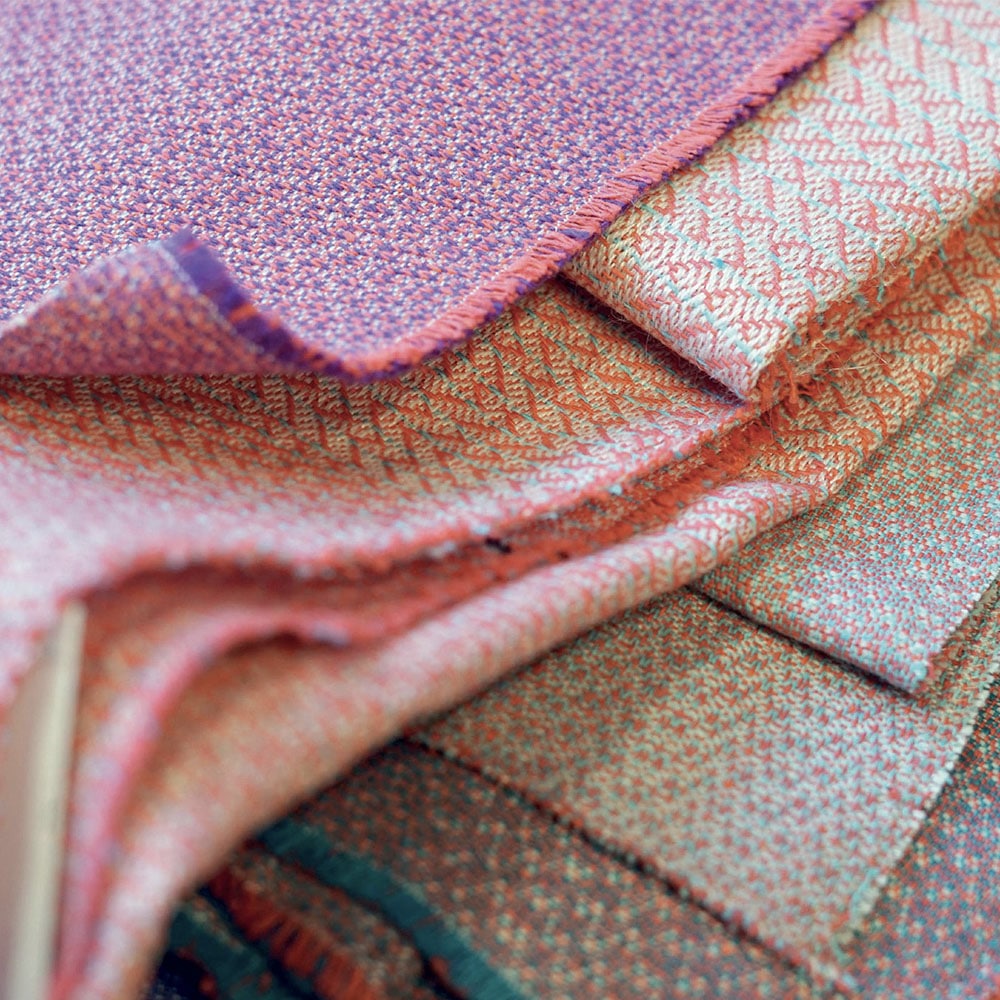
Recycled materials are not (yet) as strong as these new man-made materials. One of the reasons we use them is because they are difficult to degrade, but this also means that the billions of tonnes of plastic that we have produced are still hanging around in landfills and in the oceans. We have to change people’s perspective on this.
So yes, newly fabricated textiles are more durable in terms of longevity/durability, but after 5 to 10 years you will want to refresh the looks of your restaurant, bar, hotel, office anyway so your very durable fabric will still go to waste. We are spoiled, everything needs to be robust and if the fabric isn’t we add tons of not so environmentally friendly chemicals to make it water-resistant. We have set ourselves standards that are too high to reach for recycled or natural materials.
What steps can buyers take when purchasing home textiles to be more ethical? Ask all the questions. Where do the materials come from? What finishes are used, what does the company do with the waste chemicals, or is it a closed loop process? Are the employees that work with the chemicals protected? Do employees get education? Are they aware there are natural finishes to finish the fabrics? There’s also a whole industry trying to develop ecological finishes, for example for fire resistance. By asking the questions time and time again, people will realise they have to change their ways.
As design shows are cancelled, how can designers promote their products? This is one I’m struggling with myself! I’m looking into other platforms than the usual suspects, Instagram and Facebook. I’m currently investing some time into putting all work on Pinterest again. This seems to work. But I have never been an ’online person’, so I think I’m not really the one to ask.
Do you think we have proved more business can be done online? Yes, I think we now see we can live and work with a lot less traveling. You can do a lot of meetings online. But is it easy to find new business customers online? That is easier at fairs, I think.
What are you looking forward to doing? Hopefully we will move into our farmhouse this summer. There I definitely want to start working again on the wall hanging I started in 2018, Gloom. This is a project for a wall hanging for which we have done everything we can do by hand. Cleaning the wool of five Frisian dairy sheep, carding the wool, spinning the wool and later also peace silk, dying the wool and silk yarns with natural indigo. After 212 hours of preparation, we started weaving with all these handmade yarns. Unfortunately, as my atelier is cute and small, I had to make some choices and so the project was put on hold. Now I finally have time and hopefully room to unpack this work.
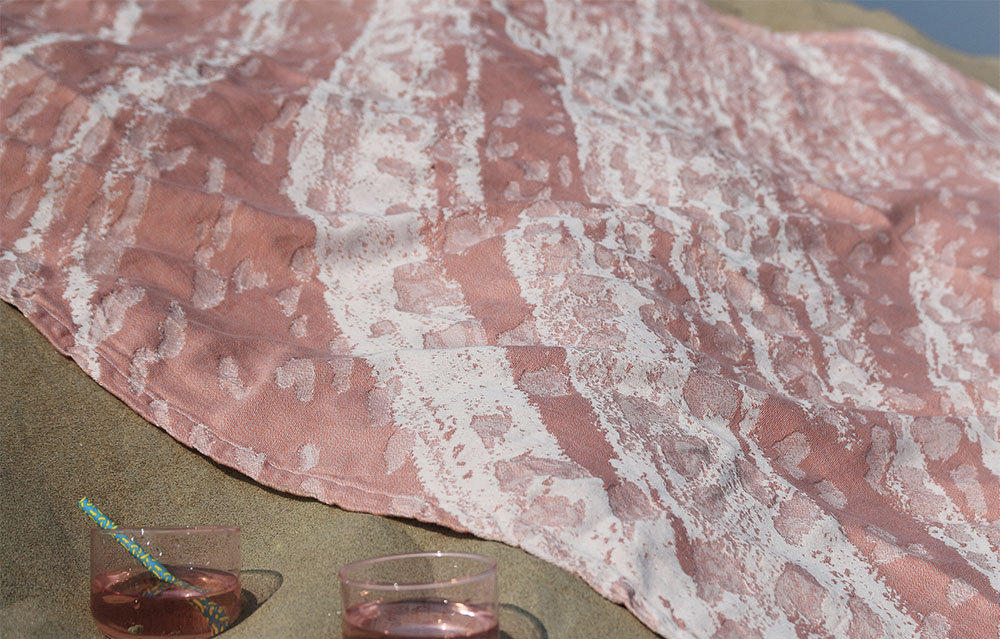
I am also looking forward to create new work, although I’m not sure yet what it will be, I only know it will be sustainable. And I definitely will start working with natural dyes again. My hands are aching to work with them again. Creativity definitely started coming back, I have so many ideas! There are so many beautiful materials I want to work with, hemp, nettle or tencel/ eucalyptus. I also look forward to working more with the recycled cotton, it is so beautiful and rich. I definitely fell in love with it!
Have you got some upcoming projects you can share? I am working on a light in collaboration with lighting designer Alex de Witte. The first prototype was made with peace silk, now we are looking into creating it with different sustainable materials like tencel or recycled PET.

